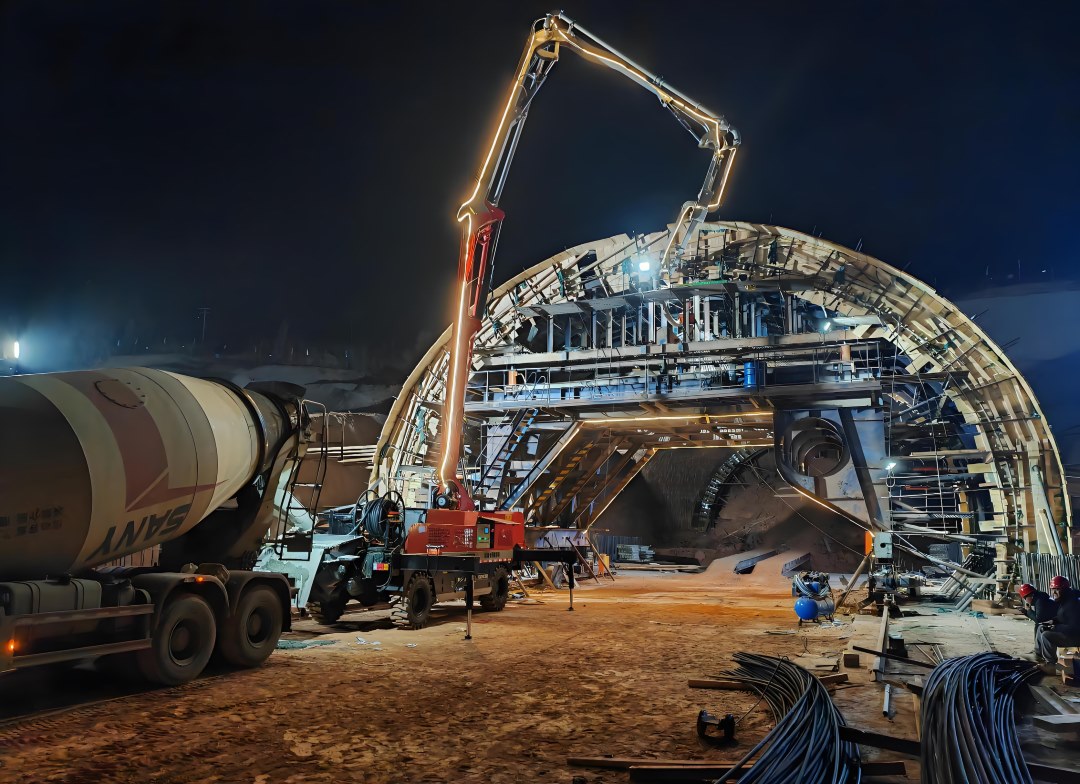What is the method of tunnel construction? Tunnel construction methods vary depending on factors such as geological conditions, tunnel size, depth, and project purpose (e.g., road, railway, water conveyance, or utility tunnel). Below are the main methods of tunnel construction:

1. Cut and Cover Method
This is one of the oldest and most straightforward methods. As the name suggests, it involves excavating a trench from the surface, constructing the tunnel structure within it, and then covering it back up.
Process:
① Excavate a trench from the surface.
② Construct the tunnel structure (usually reinforced concrete).
③ Backfill the trench and restore the surface.
Applications: Urban metro tunnels, underpasses, utility tunnels.
Advantages: Low cost and easy construction.
Disadvantages: Causes surface disruption and traffic impact.
2. Bored Tunnel (Tunnel Boring Machine, TBM)
A Tunnel Boring Machine (TBM) is used to excavate circular tunnels through soil or rock with minimal surface disturbance.
Process:
① Launch the TBM from a starting shaft.
② TBM excavates and removes soil/rock continuously.
③ Prefabricated tunnel segments are installed to form the lining behind the TBM.
④ TBM exits at a reception shaft.
Applications: Subway systems, railway tunnels, water conveyance, and road tunnels.
Advantages: Safe, fast, and causes minimal disturbance to surface activities.
Disadvantages: High initial cost and suitable mainly for long tunnels.
3. Drill and Blast Method
This is a traditional method, primarily used in rock.
Process:
① Drill blast holes into the tunnel face.
② Load explosives and carry out blasting.
③ Ventilate and remove blasted material (muck).
④ Install supports (rock bolts, shotcrete, etc.) and lining.
Applications: Hydropower, mining, and mountain road tunnels.
Advantages: Flexible and effective in hard rock.
Disadvantages: Slow progress, vibration, and noise.
4. New Austrian Tunneling Method (NATM)
A modern method that uses the surrounding ground as a load-bearing structure through controlled deformation and continuous monitoring.
Process:
① Excavate in small sections.
② Immediately apply shotcrete (sprayed concrete).
③ Add rock bolts, steel ribs, and drainage if needed.
④ Monitor deformation and adjust support as required.
Applications: Metro tunnels, highway tunnels, and mixed ground conditions.
Advantages: Economical and adaptable to various geologies.
Disadvantages: Requires skilled design and monitoring.
5. Immersed Tube Method
This method is used for underwater crossings. Pre-fabricated tunnel sections are floated out, sunk into a prepared trench on the waterbed, and connected together. Used mainly for underwater tunnels (e.g., river crossings).
Process:
① Prefabricate tunnel sections in a dry dock.
② Float and sink the sections into a dredged trench on the seabed.
③ Connect and seal the sections.
④ Cover with protective material.
Applications: Undersea or river tunnels (e.g., Hong Kong–Zhuhai–Macao Bridge Tunnel).
Advantages: Fast and suitable for wide waterways.
Disadvantages: Requires calm water and complex marine operations.
6. Pipe Jacking and Microtunneling
A method for installing tunnels under existing infrastructure (like roads or railways) by hydraulically jacking pre-cast concrete pipes through the ground as excavation occurs at the face. Used for small-diameter tunnels without open excavation.
Process:
① A microtunneling machine is pushed forward from a launching shaft.
② Pipes are jacked behind it as it progresses.
③ Excavated material is removed through the machine.
Applications: Sewage, drainage, and utility tunnels.
Advantages: Minimally invasive and accurate.
Disadvantages: Limited to small diameters and short lengths.
In practice, many large tunnel projects use a combination of these methods. For example, a subway line might use cut-and-cover for stations, TBMs for the running tunnels between them, and SEM for cross-passages or caverns.





